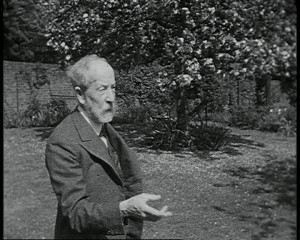
"Film footage of an elderly man, who due to the title placed on the film is likely to be Eunice Alliott’s father, Benjamin Hawes Allcroft Wilson ('Dad'), and shots of a woman named Violet, who is most likely Violet Rachel Caroline Hawes Wilson ('Violet'), Eunice Alliott’s younger sister." (EAFA Database)
"‘I practiced the additive two-colour process introduced some two years ago, and applied to the small 9.5mm film. In front of the camera lens a revolving plate containing a red and green screen is mounted in such a way that one picture is taken through the red and the following through the green screen, and so on. By cameras like the “Nizo” an interchangeable plate is mounted in front of the stop permitting one to take with the same camera both ordinary and coloured pictures. The speed for taking and projecting the film should not be less than twenty-four pictures to the second, in order to assure a correct melting of the colours of the screen. The film must be panchromatic and the colour of the screens in accordance with the film used. In the beginning when there were no panchromatic films on the market I practised the copying method. However, since the introduction of the first class reversible panchromatic films I practice the reversing method.
As regards exposure I am of the opinion that good results may be obtained in all sorts of weather. I never use a stop less than f.2. My lens is a Meyer Plasmat 1.5. The Adriatic sea films I sent you were taken with stops 8 and 11. Of course great care must be taken in developing the film to obtain satisfactory results.
Projecting may be done by two methods: First, the projector may be fitted with a revolving plate containing screens as mentioned above, but of somewhat lighter colours. The method is simple, but has two drawbacks: (a) that the projector must be adjusted with a suitable screen, and (b) that the green screen cannot be regulated. Second, the film is coloured with suitable red and green colours. When making a film in which the blue colour prevails I use a blue-green colour (see my Adriatic sea film), others, as my film Botanic Garden with a yellow-green colour. It is true that this second method requires great patience. However, the results are far more satisfactory and a film coloured by this second method can be projected on any 9.5mm. projector, together with an ordinary film at the same time'" (IAC Bulletin, Jan. 1934, 14-15).
"The film opens with pictures of Belgrade, the capital city of the country, and shows many aspects of the city. From Belgrade we are shown the passage of the mighty Danube eastward to the sea, and pause for a time at Nish, the birthplace of the Emperor Constantine. We see the happy home life of Her Majesty Queen Marie, and the independent existence of the sturdy peasantry, benevolently watched over by the Government, which preserves their interests. From the happy hours of country life we turn once more to a city, the cathedral city of Zagreb, the Rokavitza Monastery, the aerodrome at Zemun, and then again to midsummer days by the sea in the mountain lakes of Plitvitxa. [p.35] The motive around which the whole is composed is the Y.M.C.A, a strong and important organization in Jugo-Slavia, enriching the lives of its countryfolk and serving those homes are in the town" (IAC Bulletin, Apr. 1934, 34-35).
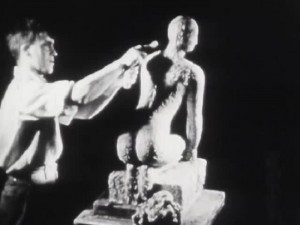
"Filmed by Norman McLaren and Willie J. MacLean, [Seven Till Five] shows a day in the life of the Glasgow School of Art." National Library of Scotland Moving Image Archive.
"A competent example of a well-planned film of a holiday for two." BFI National Archive.
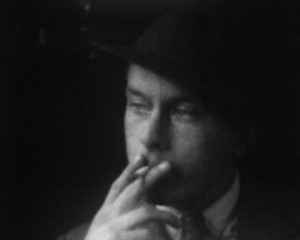
"On board the Cambridge Express, René Gade - 'Fresh from France' - travels to meet his cousin, a Cambridge don. To pass the journey, he gazes from the train window and puffs on his cigarette. Meanwhile, amidst the magnificent surrounds of King's College Cambridge, Gade's cousin - U. Wood, BA - is hard at work in the Old Lodge. Arriving at Cambridge, Gade disembarks from the train with a stumble. Later, with his car broken down on a country lane, Gade argues with the driver. A fiendish-looking passer-by offers to help, but steals the car. Nonplussed, Gade and the driver continue their journey on foot. Elsewhere, Archibald - the 'Archduke of Piffleheim' - is locked in an embrace with a young women, only to be startled by the appearance of Hecuba Brown, 'a pretty taking wench'. Succumbing to Brown's allure, he dumps his girl by pulling her leg (literally). Meanwhile, Gade and his driver spot a pair of young ladies walking down the lane. Following close behind, the pair make their move, grabbing a girl each and heading off in opposite directions" (EAFA Database).
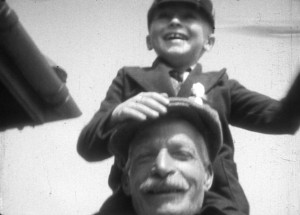
"Made by local amateur filmmaker Charles Scott, the film documents civic and public life in Norwich leading up to World War II and immediately following its conclusion. Beginning in 1933, Scott records acrobats, tightrope walkers and trapeze artists at the Norwich Carnival. The 1933 Armistice Parade features soldiers marching through the streets, halting at the eleventh hour. In 1934, Scott shows the Lord Mayor's Sunday celebrations at the Cathedral, as well as highlights from that year's Carnival. In 1935, Norwich celebrates the silver jubilee of King George V with decorations, parades, a military salute and an air display. January 1936 sees Norwich City Football Club taking on Chelsea in an FA Cup match at the newly built Carrow Road Stadium, with Scott capturing some of the action from his position behind the goal at the River End. Later that year, Scott returns to the Norwich Carnival once again, this time to catch an appearance by Hollywood starlet June Clyde. Norwich celebrates the coronation of King George VI with an extravagant street procession in May 1937. In 1938, with Britain gearing up for war, the Air Raid Precautions team practise fire-fighting and rescues, and test a new extension ladder. Following a break for wartime service, Scott returns to his film in 1946, documenting Battle of Britain Week by visiting the graves of servicemen and recording celebrations and parades in Norwich. Scott's film concludes with a visit to the home of prize-winning model engineer W.F.A. Way, who demonstrates some of his models on his garden track" (EAFA Database).
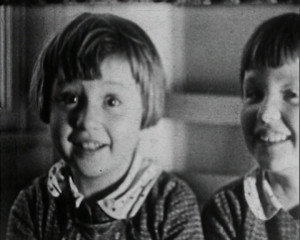
"Documentary. The holidays of two young children, Heidi and Erika, in the area of the Danube. Shots of the landscape, bathing, playing with animals, visits to the abbey at Melk and a castle" (EAFA Database).
"short abstract animation featuring visual rhythms created by the tempo and movement of circular, triangular, and square objects. Mori’s Senritsu was a black-and-white animation with synchronized music accompaniment, and Shimizu noted how the film attuned the visual images to the rhythm of the music, describing that “this kind of valuable experiment will inspire commercial talkies, more than Mickey Mouse and Silly Symphony do.” - Noriko Morisue, "Filming the Everyday: History, Theory, and Aesthetics of Amateur Cinema in Interwar and Wartime Japan" (Yale University: PhD Dissertation, 2020): 99.
Total Pages: 299